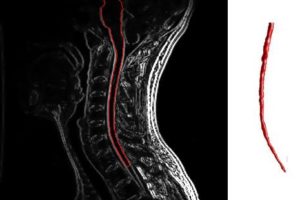nature neuroscience
RIC study suggests researchers are entering a new era of advances in brain research
CHICAGO (January 26) — Scientists at The Rehabilitation Institute of Chicago (RIC), designated the “#1 Rehabilitation Hospital in America” by U.S. News & World Report since 1991, report that, thanks to improvements in technology and data analysis,…
Structure deep within the brain may contribute to a rich, varied social life
Scientists have discovered that the amygdala, a small almond shaped structure deep within the temporal lobe, is important to a rich and varied social life among humans. The finding was published this week in a new study in Nature Neuroscience and i…
NJIT math professor illuminates cellular basis of neural impulse transmission
NJIT Associate Professor Victor Matveev, PhD, in the department of mathematical sciences, was part of a research team that published “N-type Ca2+ channels carry the largest current: Implications for nanodomains and transmitter release,” in Nature N…
Neuronal diversity makes a difference, says Carnegie Mellon study
PITTSBURGH — Much like snowflakes, no two neurons are exactly alike. But it’s not the size or shape that sets one neuron apart from another, it’s the way it responds to incoming stimuli. Carnegie Mellon University researchers have discovered …
New technique ID's parts of brain most crucial to 'normal' functioning
A team of researchers has developed a novel new brain imaging technique that produces maps that “light up” the relationship between the severity of a behavioral deficit and the voxels (similar to pixels in computer images) in the brain that contribute the most to that deficit. Discovery of the new technique, known as Voxel-based Lesion-Symptom Mapping (VLSM) will give researchers an invaluable new tool for pinpointing the specific areas of the brain that are most crucial for normal functioning during critical brain activities, starting with the measures of language comprehension and production that were used for the first demonstration in Nature Neuroscience, but moving on to many different language and non-language functions.




